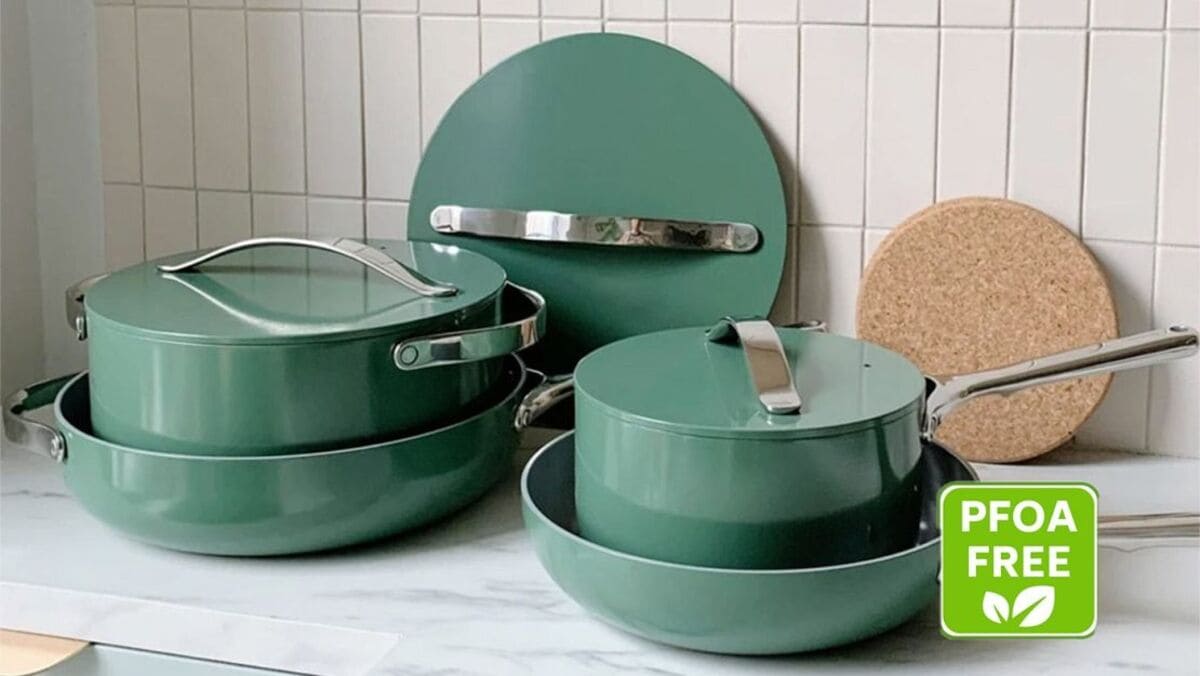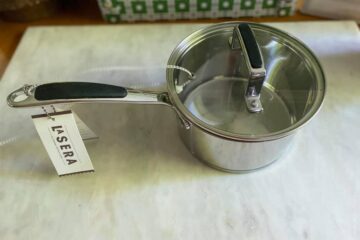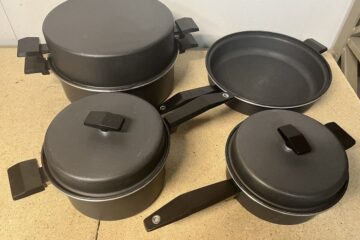Perfluorooctanoic acid (PFOA) is a synthetic chemical compound that is widely used in the manufacturing of non-stick cookware, including Teflon. PFOA has been a subject of concern among health experts and environmentalists due to its potential harm to human health and the environment.
Studies have shown that PFOA can release toxic fumes when heated at high temperatures, which can cause flu-like symptoms in humans. PFOA has also been linked to various health issues, including cancer, thyroid disease, and developmental problems in children. Due to these concerns, many manufacturers have started producing PFOA-free cookware, which is considered safer and healthier for cooking.
What is PFOA?
PFOA is an acronym for perfluorooctanoic acid, a synthetic compound that has been used in the manufacturing of certain consumer products, including non-stick cookware. It is also known as C8. PFOA is a type of perfluoroalkyl substance (PFAS) that is used to make products with high resistance to heat, water, oil, and stains.
PFOA is a man-made chemical that does not occur naturally in the environment. It is a member of a family of chemicals known as perfluoroalkyl and polyfluoroalkyl substances (PFAS). PFAS are a group of man-made chemicals that have been used in a variety of industrial and consumer products, including non-stick cookware, stain-resistant fabrics, and firefighting foam.
PFOA is used in the production of non-stick cookware because of its ability to create a slippery surface that prevents food from sticking to the pan. However, concerns have been raised about the potential health effects of PFOA exposure, particularly for those who work in industries where PFOA is used.
Research has suggested that exposure to PFOA may be linked to a range of health problems, including kidney cancer, testicular cancer, thyroid disease, and high cholesterol. While the evidence is not yet conclusive, some studies have suggested that PFOA may also be linked to developmental delays in children and immune system problems.
In response to these concerns, many manufacturers of non-stick cookware have begun to produce PFOA-free products. These products use alternative materials to create a non-stick surface, such as ceramic or diamond-infused coatings.
Why is PFOA harmful?
Health risks
PFOA, or perfluorooctanoic acid, is a man-made chemical that has been used in the production of non-stick cookware, stain-resistant carpets, and other consumer products. Exposure to PFOA has been linked to a variety of health problems, including:
- Increased risk of cancer: Studies have shown that exposure to PFOA can increase the risk of certain types of cancer, including kidney and testicular cancer.
- Reproductive problems: PFOA exposure has been linked to reduced fertility in women, as well as changes in hormone levels in men.
- Liver damage: PFOA exposure has been shown to cause liver damage in animals, and there is evidence that it can also cause liver damage in humans.
Environmental risks
PFOA is not only harmful to human health, but it also poses a threat to the environment. PFOA is a persistent organic pollutant, which means that it does not break down easily in the environment and can remain in the soil and water for many years. This can lead to widespread contamination of the environment and can harm wildlife and ecosystems.
Additionally, the production and disposal of PFOA can also have negative environmental impacts. The manufacturing process for PFOA involves the use of other toxic chemicals, and the disposal of PFOA-containing products can lead to the release of the chemical into the environment.
How is PFOA used in cookware?
PFOA is a synthetic chemical compound used in the manufacturing of certain types of cookware. It is used in combination with PTFE to make non-stick coatings for pans, including well-known brands like Teflon. PFOA is added to the manufacturing process to ensure that the non-stick coating is durable and long-lasting.
The use of PFOA in cookware has been controversial due to concerns about its potential health effects. PFOA is considered a toxic chemical and has been linked to a variety of health problems, including cancer, thyroid disease, and developmental issues in children.
Despite these concerns, PFOA has been widely used in the manufacturing of non-stick cookware for many years. However, in recent years, many manufacturers have begun to phase out the use of PFOA in their products due to growing consumer awareness of the potential health risks.
Consumers who are concerned about the use of PFOA in their cookware may want to consider purchasing PFOA-free alternatives. Many manufacturers now offer non-stick cookware that is made without the use of PFOA, using alternative materials and manufacturing processes that are considered safer for human health and the environment.
What are the alternatives to PFOA cookware?
When shopping for cookware, consumers should be aware of the dangers of PFOA, which is a toxic chemical that can be found in some non-stick cookware. Fortunately, there are several alternatives to PFOA cookware that are both safe and effective.
Ceramic cookware
Ceramic cookware is a popular alternative to PFOA cookware. It is made from natural materials and is free of any harmful chemicals. Ceramic cookware is also non-stick, which makes it easy to clean and prevents food from sticking to the surface.
One of the benefits of ceramic cookware is that it can be used at high temperatures without releasing any toxic fumes. It is also dishwasher safe and can be used in the oven. However, ceramic cookware can be prone to chipping and cracking, so it is important to handle it with care.
Stainless steel cookware
Stainless steel cookware is another safe and effective alternative to PFOA cookware. It is durable, easy to clean, and does not contain any harmful chemicals. Stainless steel cookware is also non-reactive, which means that it will not affect the taste of the food being cooked.
One of the benefits of stainless steel cookware is that it can be used on any type of stove, including induction stovetops. It is also dishwasher safe and can be used in the oven. However, stainless steel cookware can be prone to scratching, so it is important to use non-abrasive cleaning tools.
Cast iron cookware
Cast iron cookware is a classic alternative to PFOA cookware. It is made from natural materials and is free of any harmful chemicals. Cast iron cookware is also non-stick, which makes it easy to clean and prevents food from sticking to the surface.
One of the benefits of cast iron cookware is that it can be used at high temperatures without releasing any toxic fumes. It is also durable and can last for many years with proper care. However, cast iron cookware can be heavy and may require seasoning before use.
Conclusion
In conclusion, PFOA is a chemical that has been used in the manufacturing of non-stick cookware. It is a perfluorochemical that provides products with high resistance to heat, water, oil, and stains. However, PFOA has been linked to health concerns such as cancer, thyroid disease, and developmental problems.
Many manufacturers have responded to these concerns by producing PFOA-free cookware. However, it is important to note that PFOA-free does not necessarily mean chemical-free. Some companies may use other chemicals in their non-stick coatings that could also be harmful.
Consumers should be aware of the potential risks associated with non-stick cookware and make informed decisions when purchasing. It may be worth considering alternative cookware materials such as stainless steel, cast iron, or ceramic. Additionally, proper care and maintenance of cookware can help extend its lifespan and reduce the risk of harmful chemicals leaching into food.
Overall, while PFOA-free cookware may be a step in the right direction, it is important to continue researching and exploring safer alternatives to ensure the health and safety of consumers.




